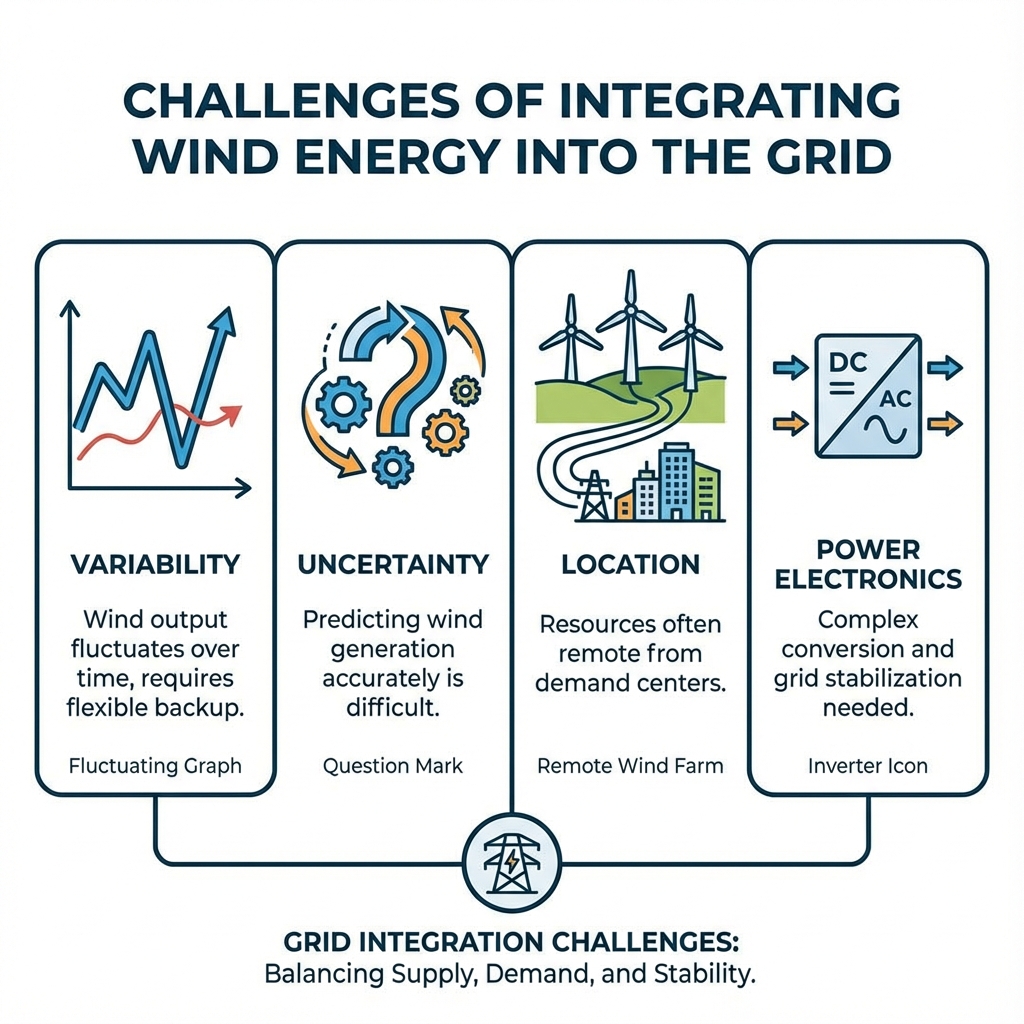Kết Nối Lưới Điện
Tích hợp năng lượng gió vào hệ thống lưới điện
Nâng Cao
39 phút đọc
Giới Thiệu
Kết nối và tích hợp năng lượng gió vào lưới điện là một trong những thách thức kỹ thuật phức tạp nhất của ngành điện hiện đại. Với đặc tính biến đổi theo thời gian và phân tán địa lý, năng lượng gió đòi hỏi những giải pháp kỹ thuật tiên tiến để đảm bảo ổn định, tin cậy và hiệu quả của hệ thống điện.
Thách Thức Cơ Bản
Năng lượng gió khác biệt với điện truyền thống:
- Biến đổi: Công suất thay đổi theo tốc độ gió
- Không chắc chắn: Khó dự báo chính xác
- Phân tán: Nhiều điểm kết nối nhỏ
- Điện tử công suất: Giao diện khác với máy phát đồng bộ

Giới Thiệu
Kết nối và tích hợp năng lượng gió vào lưới điện là một trong những thách thức kỹ thuật phức tạp nhất của ngành điện hiện đại. Với đặc tính biến đổi theo thời gian và phân tán địa lý, năng lượng gió đòi hỏi những giải pháp kỹ thuật tiên tiến để đảm bảo ổn định, tin cậy và hiệu quả của hệ thống điện.
Thách Thức Cơ Bản
Năng lượng gió khác biệt với điện truyền thống:
- Biến đổi: Công suất thay đổi theo tốc độ gió
- Không chắc chắn: Khó dự báo chính xác
- Phân tán: Nhiều điểm kết nối nhỏ
- Điện tử công suất: Giao diện khác với máy phát đồng bộ
